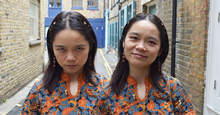Bringing Archetype (PMAI®) Together with Type (MBTI®)
This failure to holistically harmonize the types with the archetypes is the central intellectual cause of the split in the Jungian family.
—John Giannini, Compass of the Soul
Millions of people around the world know their Jungian psychological "type"—the result of completing the Myers-Briggs Type Indicator® (MBTI®) assessment. The MBTI instrument is a tool created by Isabel Briggs Myers based on C. G. Jung's theory of psychological types. Many people also know Jung’s work for his concept of archetypes and even consider archetypes to be the core of Jungian psychology.
The Pearson-Marr archetype system applies the same successful approach of the MBTI instrument to the assessment of archetypes. The Pearson-Marr Archetype Indicator® (PMAI®) assessment measures the influence of twelve archetypal themes in the lives of individuals and, when used in conjunction with knowledge of psychological type preferences, gives greater insight into the complexities of being human.
Type and archetype are concerned with different aspects of the whole personality; combining both the PMAI and MBTI instruments and systems can provide deeper self-understanding. This article gives distinctions between the theories—where they are different and the same—and some insights from our work bringing archetype and type together for people.
Type and Archetypes: Differences and Similarities
Cognitive styles versus Constellated narratives.
Type describes how we prefer to take in information and make decisions. The 16 MBTI personality types have different strengths based on preferences for Extraversion–Introversion, Sensing–Intuition, Thinking–Feeling, and Judging–Perceiving. Psychological type preferences can be understood as cognitive styles, or specific ways of receiving information and learning, and ways of evaluating information and making decisions. For example, when taking in information, a preference for Sensing will focus on concrete, immediate details and data, creating a learning style where experience and doing rely on a memory of what has worked or not worked in the past.
A preference for Feeling will make decisions based on evaluations of impact from and to relationships and people—what is most important for people in the situation and, in consequence, to personal satisfaction or values. In this way, we see that type preferences represent cognitive styles and ways of thinking and evaluating experience and information.
In contrast, archetypes impact us through implicit narratives constellated by specific circumstances and shape our interpretations of ourselves, others, and situations.
When we look at how people live their PMAI archetypes, we find that archetypal characters have qualities that people identify with, and we can link those identifications with personality type preferences. But unlike type preferences, archetypes have a dual nature—they are both characters and narratives. Archetypes as narratives emerge in context—in situations, events, and relationships, especially when these situations are repetitive—and their influence in our lives rises and falls according to circumstance. This is what we mean when we say archetypes are constellated—certain situations and contexts will trigger them to manifest in our minds and actions.
When an archetypal narrative is constellated in our lives, if we identify with it consciously, we will be more comfortable and aligned with what it brings forward or calls for. But if an archetypal narrative arises in a situation or relationship that we are not identified with consciously, we can struggle more with trying to adapt to and align with the needs of the situation. Either of these situations can reveal to us unconscious beliefs, assumptions, and desires we have about ourselves, others, and the situations we find ourselves in.
As we can see, archetypes and type are very different aspects of human personality: type is expressed through personality qualities and characteristics, whereas archetypes are expressed through motivations and underlying narratives.
Innate structure versus Contextual triggers.
Personality type has a fixed structure, which, though it develops and evolves, does not change as we change. The qualities of our personality type do not change, even though our expression of them matures and changes as we develop.
Our typological preferences develop as we mature through time; sometimes we are thrust into situations or relationships that push us to lean into a preference that we do not favor, and through that experience, we become more comfortable and skilled in using the perspectives and qualities of that preference. Other times, we decide more consciously to lean into a less favored preference, perhaps when we are promoted at work or in an important relationship.
In our work with archetypes, people report a common experience that specific archetypes in their profile are brought out in them at work while different archetypes come forward in their home life, and different ones still may be more apparent with friends or on the holidays with families. That is, the PMAI archetypes in a person’s Archetype Profile will shift depending on the situation or context they are in because different parts of our personality type are identified with and brought out by different circumstances and relationships.
Because type is fixed, your type will not change through your life, but your archetype profile will change as important situations and relationships in your life change. This is a core difference between the two systems.
Different links to the unconscious.
A person’s favored or dominant personality type preferences are typically used consciously, while their third and least favored preference, also called the inferior function in Jung’s work, is more unconscious for people. In type, the preferences are in opposing pairs, with the non-dominant preferences expressing as a lack of ability or comfort in using these preferences and an experience that they are “not-me.”
Personality type expresses what Jung called the compensating function of the unconscious that holds the opposing position, views, beliefs, etc., of what is known and identified with consciously. For example, a preference for Thinking will have as a compensating function in the unconscious the perspectives, sensibilities, and focus of the Feeling preference.
In contrast, archetypal narratives are not preferences or qualities within a personality but represent a full character and story with many nuances and layers of meaning. An active Magician archetypal narrative in a person’s life is motivated to create change and to be in dynamic movement or flow with situations. This narrative will focus on hidden elements in an event, unspoken needs, and possible outcomes not yet manifest, all in a desire to align with transformative potentials.
The potential for transformation is a deep motivation for the Magician, who focuses on intuitively finding and working with energies and forces that are often unseen or unrecognized by others. This fine-tuned sense for calling forth hidden potential can appear like magic when a Magician suddenly reveals or manifests a possibility that was previously invisible.
Considering this focus on transformation, the Magician archetypal narrative will automatically interpret events through what can be changed and what needs to evolve. The Magician narrative will shape conversations and experiences with a sensitivity to what is unspoken, not consciously thought of or considered, and what can only be imagined. Archetypes contain a wealth of information about us that is usually unconscious, such as implicit beliefs and assumptions about life, worldviews, or unrecognized desires and motivations.
Bringing the PMAI and the MBTI Instruments Together
In our research at Storywell, we have analyzed correlations of results from the MBTI and PMAI instruments used in combination, confirming predicted relationships between these two measures. For example, the Seeker archetype is largely concerned with potential—visualizing and pursuing possibilities. High Seeker scores on the PMAI assessment had a statistically significant association with a preference for Intuition on the MBTI measure.1,2 Other predictions were met, such as a high correlation of a Feeling preference with high-scoring Caregiver and Lover archetypes, while low scores of these two archetypes were associated with preferences for Thinking. In a future article, we will unpack the empirical correlational study more fully.
In qualitative work combining MBTI and PMAI instruments, people have reported on experiences that tell us more about individuals, personality type, and archetypes than can be known from just one assessment. Continuing with our example of a high scoring Seeker archetype that correlates with Intuition, we find that type shapes the focus of the Seeker as well.
For example, a preference for Thinking is more likely to orient Seeker towards facts, accuracy, and knowledge—a "search for truth." The Seeker in a person with a preference for Feeling, a preference more concerned with harmony, contentment, and human values, is more likely to be on a quest for meaning or authenticity. The Seeker archetypal narrative will always manifest a quest, but the focus of that quest will be refined and shaped by personality type.
We have found in our experiential, qualitative work with people that the qualities and characteristics of type preferences are emphasized differently across a constellated archetype. A person with preferences for INTJ, for example, may have Seeker, Ruler, and Creator as high scoring Allies in their PMAI profile. But each archetype will pull out specific qualities: the Ruler will emphasize a desire for control and power, the Creator will lean into the imaginative capacity of intuition, and the Seeker will be especially sensitive to needs for autonomy and possibility.
Some of the most compelling work people do is when they are living archetypal narratives constellated in an area of their life that does not have an easy affinity with their personality type. In one such case, a woman with preferences for ENFJ—a warm, gregarious person who valued harmony—had the Revolutionary archetype high in her PMAI profile. Being that the Revolutionary archetype is not too concerned with harmony but is focused on confronting what does not work and eliminating it, she was not always comfortable with this narrative leading her focus and compelling behaviors from her.
However, the Revolutionary does align with another aspect of the ENFJ type, which is a deep value for authenticity and honesty. She became more forthright in her opinions, her positions, and her needs, which in the end supported her growth and the growth of her relationships.
Summary
Jung’s theories of archetype and psychological type are quite different, but in ways that can emphasize, build on, and accelerate self-growth. Personality type is a fixed structure that does not change over time, though our expression of our type does change through time. In contrast, archetypes are fluid and dynamic narratives constellated in specific circumstances. Our work and research bringing the PMAI and MBTI assessments together has demonstrated that personality qualities in type are emphasized by high-scoring archetypes. This work has also shown that personality type preferences play a refining and shaping role with archetypes, grounding the archetypal motivations and worldviews into specific focuses and goals of everyday life.
Blandin, K., Marr, H. K., & Pearson, C. S. (2021). PMAI Manual. CAPT.
McPeek, R. W. (2008). The Pearson-Marr Archetype Indicator and psychological type. Journal of Psychological Type, 68(7), 52-67.




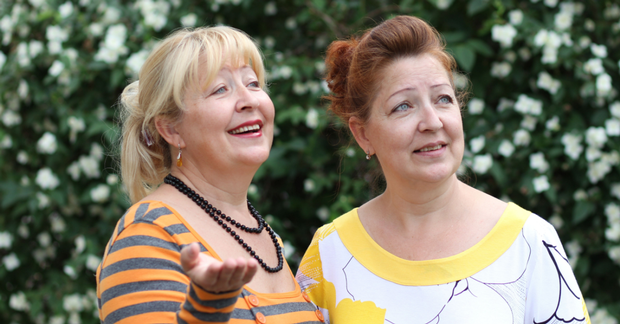






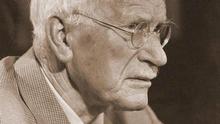













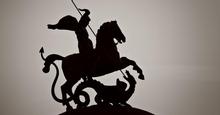
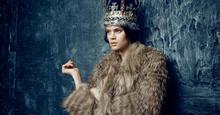


_thumb.png)
_thumb.png)
_thumb.png)
_thumb.png)

